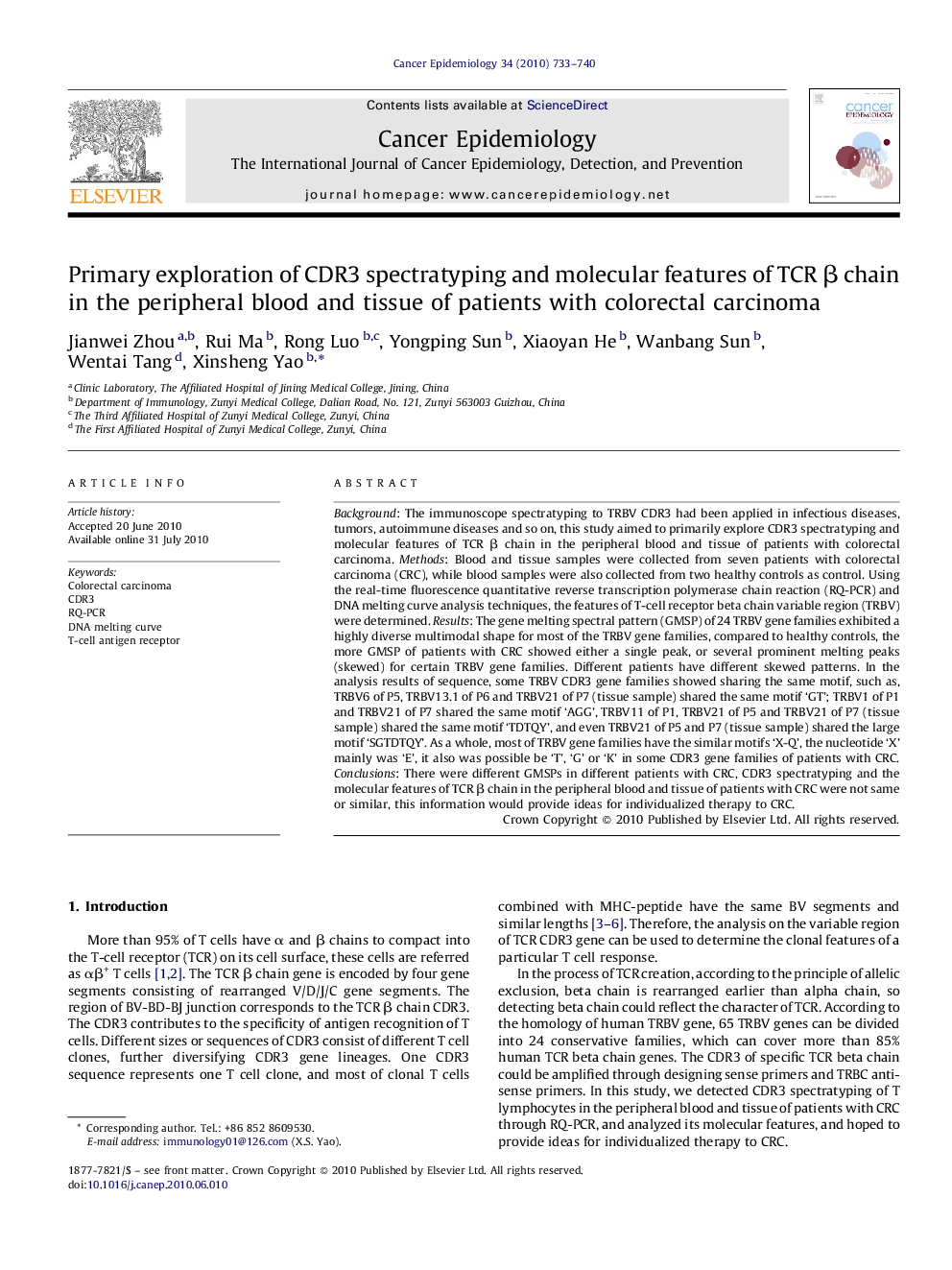| Article ID | Journal | Published Year | Pages | File Type |
|---|---|---|---|---|
| 2109319 | Cancer Epidemiology | 2010 | 8 Pages |
Background: The immunoscope spectratyping to TRBV CDR3 had been applied in infectious diseases, tumors, autoimmune diseases and so on, this study aimed to primarily explore CDR3 spectratyping and molecular features of TCR β chain in the peripheral blood and tissue of patients with colorectal carcinoma. Methods: Blood and tissue samples were collected from seven patients with colorectal carcinoma (CRC), while blood samples were also collected from two healthy controls as control. Using the real-time fluorescence quantitative reverse transcription polymerase chain reaction (RQ-PCR) and DNA melting curve analysis techniques, the features of T-cell receptor beta chain variable region (TRBV) were determined. Results: The gene melting spectral pattern (GMSP) of 24 TRBV gene families exhibited a highly diverse multimodal shape for most of the TRBV gene families, compared to healthy controls, the more GMSP of patients with CRC showed either a single peak, or several prominent melting peaks (skewed) for certain TRBV gene families. Different patients have different skewed patterns. In the analysis results of sequence, some TRBV CDR3 gene families showed sharing the same motif, such as, TRBV6 of P5, TRBV13.1 of P6 and TRBV21 of P7 (tissue sample) shared the same motif ‘GT’; TRBV1 of P1 and TRBV21 of P7 shared the same motif ‘AGG’, TRBV11 of P1, TRBV21 of P5 and TRBV21 of P7 (tissue sample) shared the same motif ‘TDTQY’, and even TRBV21 of P5 and P7 (tissue sample) shared the large motif ‘SGTDTQY’. As a whole, most of TRBV gene families have the similar motifs ‘X-Q’, the nucleotide ‘X’ mainly was ‘E’, it also was possible be ‘T’, ‘G’ or ‘K’ in some CDR3 gene families of patients with CRC. Conclusions: There were different GMSPs in different patients with CRC, CDR3 spectratyping and the molecular features of TCR β chain in the peripheral blood and tissue of patients with CRC were not same or similar, this information would provide ideas for individualized therapy to CRC.
